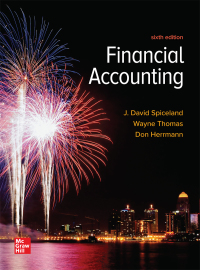Answered step by step
Verified Expert Solution
Question
1 Approved Answer
Goal: Ch 1, Cash-basis vs. accrual-basis accounting equation (pp. 14-15). 1. Consider the following two cash-basis equations: 1 Assets/Resources = Shareholders Equity (SHE) 2 Cash
Goal: Ch 1, Cash-basis vs. accrual-basis accounting equation (pp. 14-15).
1. Consider the following two cash-basis equations:
1
Assets/Resources
=
Shareholders Equity (SHE)
2
Cash
=
Contributed Capital
+
Earned Capital
a. The second equation simply portrays assets (or resources) from the first equation as containing one component, Cash; and Shareholders Equity from the first equation as containing two components: 1) contributed capital, and 2) earned capital.
b. Owners contribute capital to the business, with the expectation that managers will generate profits. Think of this as external capital (i.e., capital from the outside).
c. In contrast, the firm generates earned capital from transactions with customers and vendors, which create revenues and expenses, respectively. So, earned capital is non-owner capital generated by using the firms internal resources. Revenues minus expenses equal profit or loss. If the firm is profitable, then earned capital grows, and if the firm is unprofitable, then earned capital shrinks. Note that profits represent potential dividend payments to shareholders (i.e., a return on their investments).
i. Key is that earned capital requires transactions with non-owner parties (i.e., arms-length transactions).
ii. For now, think of earned capital as the cumulative, life-to-date profit or loss for the business. And profit or loss is simply the difference between revenues and expenses.
2. Consider the following two accrual-basis equations:
1
Assets/Resources
=
Liabilities
+
Shareholders Equity (SHE)
2
Cash
+
A/R
+
Inventory
=
A/P1
+
Taxes Payable
+
STD1
+
LTD1
+
Contributed Capital
+
Earned Capital
a. The first equation now portrays two broad types of claims against the assets/resources: liabilities and SHE.
i. Liabilities represent obligations to creditors (not owners). For example, the firm may purchase inventory on credit, where they obtain the goods now, but pay the bill later. So, creditors also contribute capital to the firm, but a slightly different type of capital than owner capital.
ii. Creditor-provided capital comes with a legal contract for repayment, where owner capital has no such contract.
b. The second equation now portrays assets (or resources) as containing three components; liabilities now contain four components; and Shareholders Equity is the same as before.
3. Compare the cash-basis and accrual-basis equations.
a. How are they different? What is the name of the concept that captures the differences?
4. Assume that you are the bank, and a prospective borrower provides you with two reports/equations that describe the borrowers company: 1) the cash-basis report/equation; and 2) the accrual-basis equation.
a. Which report/equation is most useful to you, the banker?.
Step by Step Solution
There are 3 Steps involved in it
Step: 1

Get Instant Access to Expert-Tailored Solutions
See step-by-step solutions with expert insights and AI powered tools for academic success
Step: 2

Step: 3

Ace Your Homework with AI
Get the answers you need in no time with our AI-driven, step-by-step assistance
Get Started


